#rushfoil
Explore tagged Tumblr posts
Text
instagram
#Instagram#nathan head#croton#croton plant#rushfoil#i thinkkkkkk garden croton?#Codiaeum variegatum#fire croton#garden croton#variegated croton#Croton variegatum
0 notes
Text

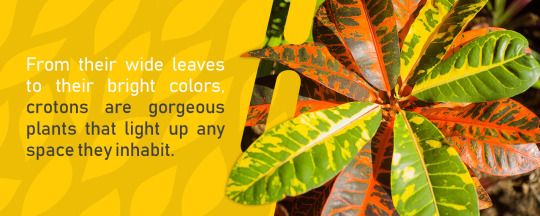
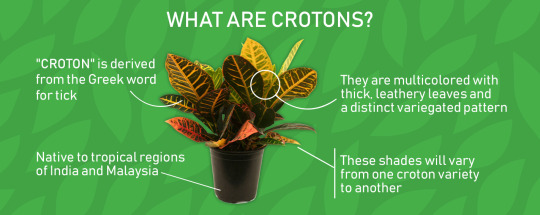
The croton plant is a perennial evergreen shrub that’s native to tropical regions of India and Malaysia. These striking plants are multicolored with thick, leathery leaves and a distinct variegated pattern. A croton’s bright colors are its most recognizable feature, and these shades will vary from one croton variety to another, ranging from green and gold to blue-green and pink. While all mature crotons possess these vibrant colors, the leaves will darken as the plants age, eventually turning almost black.
The name “croton” itself is derived from the Greek word for tick, since the heavy veins that criss-cross the leaves bear a striking resemblance to these insects. This name is pronounced phonetically, and sounds like “crow-tun.” Crotons are commonly confused with a plant called Rushfoil but don’t be fooled. Rushfoil is a subspecies of crotons — one of the many different varieties that fall into this larger plant family.
Croton height will vary slightly depending on the variety. Most will be around 3 feet tall although some can grow as tall as 10 feet. Dwarf varieties exist as well, and these will be much shorter. Crotons are also exceptionally full plants, with the large leaves growing in clusters to give the plant greater volume.
https://www.beegreen365.com/services/shrub-and-ornamental-care/croton-plant-care/
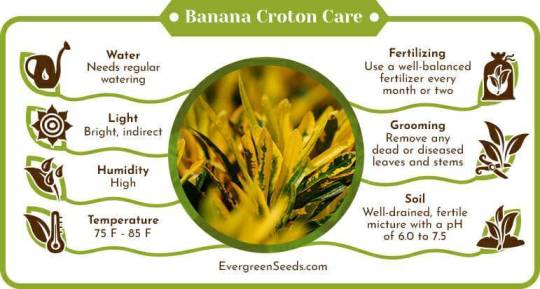
Where Should I Keep my Crotons?
Whether you decide to keep your crotons inside or out, make sure to place them in a spot where they’ll get plenty of sunlight throughout the day. Without this, those gorgeous colors will quickly begin to fade.
To plant crotons in a pot, begin by choosing a planter with several drainage holes that is roughly one third larger than the croton’s root ball. Fill the container about a third of the way full of potting soil before carefully nesting the ball on top of this soil bed. Continue adding soil around and over the roots until the pot is full and the roots are buried about an inch below the surface. Water the plant, let it drain and then set it in its new home in a sunny location.
It’s crucial to remember that crotons favor a warm, humid environment. If you’re planting them in a very different climate, your goal is to mimic these conditions as much as possible. To achieve this, the soil in which crotons are planted should remain moist but not soaking, particularly during the spring and summer when crotons will be doing most of their growing. To judge if the plant needs water, feel the soil. If it’s starting to feel dry and crumbly, give it a little water. If it still feels moist to the touch, it probably has all the water it needs.
If you’ve felt the croton’s soil and still can’t determine whether or not it needs water, let the plant’s foliage be your guide. If the leaves are drooping or curling up, that’s their way of asking you for more water. If they’re perked upright, however, they’re probably doing just fine. If the air inside your home is especially dry, or if you have the croton planted outside and live in an arid environment, you may need to water it a little more often. You may even want to mist the leaves with a spray bottle to keep the leaves healthy and growing.
Remember that just as crotons should not be allowed to dry out, neither should they be kept too wet. Too much water can rot the roots and kill the plant just as easily as if it had been left too dry.
How To Propagate CROTON Plant In Water With 100% RESULTS How to grow Croton plant without soil https://youtu.be/c_ZfYmpVVOs
youtube
0 notes
Quote
List of kampo herbs From Wikipedia, the free encyclopedia (Redirected from Kampo herb list) Jump to navigationJump to search This article may require cleanup to meet Wikipedia's quality standards. The specific problem is: External links that appear to be advertising Please help improve this article if you can. (December 2019) (Learn how and when to remove this template message) Kampō (or Kanpō, 漢方) medicine is the Japanese study and adaptation of traditional Chinese medicine. In 1967, the Japanese Ministry of Health, Labour and Welfare approved four kampo medicines for reimbursement under the National Health Insurance (NHI) program. In 1976, 82 kampo medicines were approved by the Ministry of Health, Labour and Welfare. Currently, 148 kampo medicines are approved for reimbursement. [1] The 14th edition of the Japanese Pharmacopoeia (JP) (日本薬局方 Nihon yakkyokuhō) lists 165 herbal ingredients that are approved to be used in kampo remedies.[2] Tsumura (ツムラ) is the leading maker[3] making 128 of the 148 kampo medicines. The "count" column shows in how many of these 128 formulae the herb is found. The most common herb is Glycyrrhizae Radix (Chinese liquorice root). It is in 94 of the 128 Tsumura formulae. Other common herbs are Zingiberis Rhizoma (ginger) (51 of 128 formulae) and Paeoniae Radix (Chinese peony root) (44 of 128 formulae). Name Common Name Kanji Katakana Pinyin Chinese (T) Chinese (S) Genus species Count Achyranthis Radix achyranthis root 牛膝 ゴシツ niú xī 牛膝 牛膝 Achyranthes fauriei 3 Aconiti Rhizoma Carmichael's monkshood rhizome 附子 ブシ fù zǐ 附子 附子 Aconitum carmichaelii 6 Akebiae Caulis chocolate vine stem 木通 モクツウ mù tōng 木通 木通 Akebia quinata 5 Alismatis Rhizoma water plantain rhizome 沢瀉 タクシャ zé xiè 澤瀉 泽泻 Alisma orientale 14 Alpiniae Officinari Rhizoma lesser galangal rhizome 良姜 リョウキョウ liáng jiāng 良薑 良姜 Alpinia officinarum 1 Amomi Semen black cardamom seed 縮砂 シュクシャ shā rén 砂仁 砂仁 Amomum xanthioides 1 Anemarrhenae Rhizoma anemarrhena rhizome 知母 チモ zhī mǔ 知母 知母 Anemarrhena asphodeloides 6 Angelicae Dahuricae Radix angelica root 白芷 ビャクシ bái zhǐ 白芷 白芷 Angelica dahurica 5 Angelicae Radix Chinese angelica root 当帰 トウキ dāng guī 當歸 当归 Angelica acutiloba 37 Araliae Cordatae Radix Japanese spikenard root 和羌活 ワキョウカツ tǔ dāng guī 土當歸 土当归 Aralia cordata 1 Araliae Cordatae Rhizoma Japanese spikenard rhizome 独活 ドッカツ tǔ dāng guī 土當歸 土当归 Aralia cordata 1 Arctii Fructus greater burdock fruit 牛蒡子 ゴボウシ niú bàng zǐ 牛蒡子 牛蒡子 Arctium lappa 2 Arecae Semen betel nut areca nut 檳榔子 ビンロウジ bīng láng/ bīn láng[4] 檳榔 槟榔 Areca catechu 1 Arisaematis Rhizoma arisaema rhizome 天南星 テンナンショウ tiān nán xīng 天南星 天南星 Arisaema heterophyllum 1 Artemisiae Capillari Flos wormwood flower, mugwort flower 茵蔯蒿 インチンコウ yīn chén hāo 茵陳蒿 茵陈蒿 Artemisia capillaris 2 Artemisiae Folium wormwood leaf, mugwort leaf 艾葉 ガイヨウ ài yè 艾葉 艾叶 Artemisia princeps 1 Asiasari Radix Chinese wild ginger root 細辛 サイシン xì xīn 細辛 细辛 Asarum sieboldii 5 Asini Corii Collas collagen 阿膠 アキョウ ē jiāo 阿膠 阿胶 5 Asparagi Radix asparagus root 天門冬 テンモンドウ tiān mén dōng 天門冬 天门冬 Asparagus cochinchinensis 2 Astragali Radix astragalus root 黄耆 オウギ huáng qí 黃蓍 黄芪 Astragalus membranaceus 14 Atractylodis Lanceae Rhizoma atractylodes rhizome 蒼朮 ソウジュツ cāng zhú 蒼朮 苍术 Atractylodes lancea 34 Atractylodis Rhizoma white atractylodes rhizome 白朮 ビャクジュツ bái zhú 白朮 白术 Atractylodes japonica 8 Aurantii Fructus Immaturus unripe bitter orange 枳実 キジツ zhǐ shí 枳實 枳实 Citrus aurantium 14 Aurantii Nobilis Pericarpium aged mikan orange peel 陳皮 チンピ chén pí 陳皮 陈皮 Citrus unshiu 24 Bambusae Caulis, Phyllostachysis Caulis bamboo shavings 竹筎 チクジョ zhú rú 竹茹 竹茹 Bambusa tuldoides 2 Benincasae Semen winter melon seed 冬瓜子 トウガシ dōng guā zǐ 冬瓜子 冬瓜子 Benincasa cerifera 1 Bovis Bezoar cattle gallstone calculus bovis 牛黄 ゴオウ niú huáng 牛黃 牛黄 Bos taurus 0 Bupleuri Radix bupleurum root 柴胡 サイコ chái hú 柴胡 柴胡 Bupleurum falcatum 22 Camelliae Folium tea leaf 茶葉 チャヨウ chá yè 茶葉 茶叶 Camellia sinensis 1 Cannabis Fructus hemp fruit 麻子仁 マシニン má zǐ rén 麻子仁 麻子仁 Cannabis sativa 3 Carthami Flos safflower flower 紅花 コウカ hóng huā 紅花 红花 Carthamus tinctorius 2 Caryophylli Flos clove flower 丁子 チョウジ dīng zǐ 丁子 丁子 Syzygium aromaticum 2 Cassiae Semen senna seed 決明子 ケツメイシ jué míng zǐ 決明子 决明子 Senna obtusifolia (formerly Cassia) 0 Chrysanthemi Flos chrysanthemum flower 菊花 キッカ jú huā 菊花 菊花 Chrysanthemum morifolium 1 Cicadae Periostracum cicada molting 蝉退 ゼンタイ chán tuì 蟬退 蝉退 Cryptotympana tustulata 1 Cimicifugae Rhizoma bugbane rhizome, cohosh rhizome 升麻 ショウマ shēng má 升麻 升麻 Cimicifuga simplex 5 Cinnamomi Cortex Chinese cinnamon bark 桂皮 ケイヒ guì pí 桂皮 桂皮 Cinnamomum cassia 39 Clematidis Radix clematis root 威霊仙 イレイセン wēi líng xiān 威靈仙 威灵仙 Clematis chinensis 2 Cnidii Rhizoma cnidium root 川芎 センキュウ chuān xiōng 川芎 川芎 Cnidium officinale 25 Coicis Semen Job's Tears seed 薏苡仁 ヨクイニン yì yǐ rén 薏苡仁 薏苡仁 Coix lacryma 3 Coptidis Rhizoma goldenthread rhizome 黄連 オウレン huáng lián 黃連 黄连 Coptis japonica 11 Corni Fructus Japanese cornel fruit 山茱萸 サンシュユ shān zhū yú 山茱萸 山茱萸 Cornus officinalis 3 Corydalis Rhizoma corydalis rhizome 延胡索 エンゴサク yán hú suǒ 延胡索 延胡索 Corydalis turtschaninovii 1 Crassostreae Testa pacific oyster shell 牡蛎 ボレイ mǔ lì 牡蠣 牡蛎 Crassostrea gigas 4 Crataegi Fructus Japanese hawthorn fruit 山楂子 サンザシ shān zhā 山楂 山楂 Crataegus cuneata 1 Crotonis Semen rushfoil seed, croton seed 巴豆 ハズ bā dòu 巴豆 巴豆 Croton tiglium 0 Cyperi Rhizoma nut-grass rhizome 香附子 コウブシ xiāng fù zǐ 香附子 香附子 Cyperus rotundus 6 Dioscoreae Rhizoma Chinese yam rhizome 山薬 サンヤク shān yào 山藥 山药 Dioscorea japonica D. opposita 4 Ephedrae Herba ephedra herb 麻黄 マオウ má huáng 麻黃 麻黄 Ephedra sinica 13 Eriobotryae Folium loquat leaf 枇杷葉 ビワヨウ pí pá yè 枇杷葉 枇杷叶 Eriobotrya japonica 1 Eucommiae Cortex eucommia bark 杜仲 トチュウ dù zhòng 杜仲 杜仲 Eucommia ulmoides 1 Eupolyphaga ground beetle, wingless cockroach 庶虫(1) シャチュウ tǔ biē chóng 土鱉蟲 土鳖虫 Eupolyphaga sinensis 0 Fel Ursi bear gallbladder 熊胆 ユウタン xióng dǎn 熊膽 熊胆 Ursus arctos 0 Foeniculi Fructus fennel fruit 茴香 ウイキョウ huí xiāng 茴香 茴香 Foeniculum vulgare 1 Forsythiae Fructus forsythia fruit 連翹 レンギョウ lián qiào 連翹 连翘 Forsythia suspensa 5 Fossilia Ossis Mastodi dragon bone, fossilized vertebrae and bones 竜骨 リュウコツ lóng gǔ 龍骨 龙骨 2 Fritillariae Bulbus fritillaria bulb 貝母 バイモ bèi mǔ 貝母 贝母 Fritillaria verticillata 2 Gardeniae Fructus gardenia fruit 山梔子 サンシシ shān zhī zǐ 山梔子 山栀子 Gardenia jasminoides 13 Gastrodiae Rhizoma gastrodia rhizome 天麻 テンマ tiān má 天麻 天麻 Gastrodia elata 1 Gentianae Scabrae Radix Chinese gentian root 竜胆 リュウタン lóng dǎn caǒ 龍膽草 龙胆草 Gentiana scabra 3 Glehniae Radix Cum Rhizoma glehnia rhizome 浜防風 ハマボウフウ běi shā shēn 北沙參 北沙参 Glehnia littoralis 1 Glycyrrhizae Radix Chinese liquorice root 甘草 カンゾウ gān cǎo 甘草 甘草 Glycyrrhiza uralensis 94 Glycyrrhizae Radix preparata Chinese liquorice root 炙甘草 シャカンゾウ zhì gān cǎo 炙甘草 炙甘草 Glycyrrhiza uralensis 1 Gypsum Fibrosum gypsum mineral 石膏 セッコウ shí gāo 石膏 石膏 10 Hordei Fructus Germinatus barley sprout 麦芽 バクガ mài yá 麥芽 麦芽 Hordeum vulgare 1 Houttuyniae Herba houttuynia herb 十薬 ジュウヤク shí yào 十藥 十药 Houttuynia cordata 0 Leonuri Herba Chinese motherwort herb 益母草 ヤクモソウ yì mǔ cǎo 益母草 益母草 Leonurus japonicus 0 Lilii Bulbus tiger lily bulb 百合 ビャクゴウ bǎi hé 百合 百合 Lilium lancifolium 1 Linderae Radix spicebush root, benjamin bush root 烏薬 ウヤク wū yào 烏樂 乌乐 Lindera strychnifolia 0 Lithospermi Radix lithospermum root 紫根 シコン zǐ gēn 紫根 紫根 Lithospermum erythrorhizon 0 Longan Arillus longan fruit flesh 竜眼肉 リュウガンニク lóng yǎn ròu 龍眼肉 龙眼肉 Euphoria longana 2 Lonicerae Folium Cum Caulis Japanese honeysuckle stem 忍冬 ニンドウ rěn dōng téng 忍冬藤 忍冬疼 Lonicera japonica 1 Lycii Cortex wolfberry tree bark 地骨皮 ジコッピ dì gǔ pí 地骨皮 地骨皮 Lycium chinense 2 Lycii Fructus wolfberry tree fruit 枸杞子 クコシ gǒu qǐ zǐ 枸杞子 枸杞子 Lycium chinense 0 Magnoliae Cortex houpu magnolia bark 厚朴 コウボク hòu pò 厚朴 厚朴 Magnolia officinalis 12 Magnoliae Flos willow-leafed magnolia flower 辛夷 シンイ xīn yí 辛夷 辛夷 Magnolia salicifolia 2 Menthae Herba wild mint herb 薄荷 ハッカ bò hé 薄荷 薄荷 Mentha arvensis 7 Mori Cortex white mulberry bark 桑白皮 ソウハクヒ sāng bái pí 桑白皮 桑白皮 Morus alba 2 Natrii Sulfus sodium sulfate 芒硝 ボウショウ máng xiāo 芒硝 芒硝 6 Nelumbis Semen sacred lotus seed 蓮肉 レンニク lián ròu 蓮肉 莲肉 Nelumbo nucifera 2 Notopterygii Rhizoma notopterygium rhizome 羌活 キョウカツ qiāng huó 羌活 羌活 Notopterygium incisum 3 Nupharis Rhizoma Japanese water lily rhizome 川骨 センコツ chuān gǔ 川骨 川骨 Nuphar japonicum 1 Ophiopogonis Rhizoma mondo grass rhizome 麦門冬 バクモンドウ mài mén dōng 麥門冬 麦门冬 Ophiopogon japonicus 11 Oryzae Semen rice seed 粳米 コウベイ jīng mǐ 粳米 粳米 Oryza sativa 2 Paeoniae Moutan Cortex tree peony bark 牡丹皮 ボタンピ mǔ dān pí 牡丹皮 牡丹皮 Paeonia moutan 8 Paeoniae Radix Chinese peony root 芍薬 シャクヤク sháo yào 芍藥 芍药 Paeonia lactiflora 44 Panacis Ginseng Radix ginseng root 人参 ニンジン rén shēn 人參 人参 Panax ginseng 37 Panacis Japonicus Japanese ginseng root 竹節人参 チクセツニンジン zhú jié rén shēn 竹節人參 竹节人参 Panax japonicus 0 Perillae Herba shiso herb, beefsteak plant 蘇葉 ソヨウ sū yè 蘇葉 苏叶 Perilla frutescens 6 Persicae Semen peach kernel 桃仁 トウニン táo rén 桃仁 桃仁 Prunus persica 6 Peucedani Radix peucedanum root 前胡 ゼンコ qián hú 前胡 前胡 Peucedanum praeruptorum 1 Phellodendri Cortex cork-tree bark 黄柏 オウバク huáng bǎi 黃柏 黄柏 Phellodendron amurense 8 Pinelliae Rhizoma pinellia rhizome 半夏 ハンゲ bàn xià 半夏 半夏 Pinellia ternata 27 Plantaginis Semen Chinese plantain seed 車前子 シャゼンシ chē qián zǐ 車前子 车前子 Plantago asiatica 4 Platycodi Radix Chinese bellflower root, balloon flower root 桔梗 キキョウ jié gěng 桔梗 桔梗 Platycodon grandiflorus 12 Polygalae Radix milkwort root, snakeroot 遠志 オンジ yuǎn zhì 遠志 远志 Polygala tenuifolia 3 Polygoni Multiflori Radix Chinese knotweed root 何首烏 カシュウ hé shǒu wū 何首烏 何首乌 Reynoutria multiflora 1 Polyporus polyporus mushroom 猪苓 チョレイ zhū líng 豬苓 猪苓 Polyporus umbellatus 6 Poria tuckahoe mushroom 茯苓 ブクリョウ fú líng 茯苓 茯苓 Poria cocos 46 Prunus armeniaca apricot kernel 杏仁 キョウニン xìng rén 杏仁 杏仁 Prunus armeniaca 9 Puerariae Radix kudzu root 葛根 カッコン gé gēn 葛根 葛根 Pueraria lobata 4 Quercus Cortex sawtooth oak bark 樸樕 ボクソク xi��ng shí 橡實 橡实 Quercus acutissima 2 Rehmanniae Radix Chinese foxglove root 地黄 ジオウ dì huáng 地黃 地黄 Rehmannia glutinosa 22 Rhei Rhizoma turkey rhubarb rhizome 大黄 ダイオウ dà huáng 大黃 大黄 Rheum palmatum 16 Saccharum Granorum ground sugar 膠飴 コウイ jiāo yí 膠飴 胶饴 0 Saposhnikoviae Radix saposhnikovia root 防風 ボウフウ fáng fēng 防風 防风 Saposhnikovia divaricata 11 Sappan Lignum sappan wood shavings 蘇木 ソボク sū mù 蘇木 苏木 Caesalpinia sappan 1 Saussureae Radix saw-wort root, snow lotus root 木香 モッコウ mù xiāng 木香 木香 Saussurea lappa 3 Schisandrae Fructus schisandra fruit 五味子 ゴミシ wǔ wèi zǐ 五味子 五味子 Schisandra chinensis 5 Schizonepetae Spica schizonepeta spikes 荊芥 ケイガイ jīng jìe 荊芥 荆芥 Schizonepeta tenuifolia 8 Scutellariae Radix skullcap root 黄芩 オウゴン huáng qín 黃芩 黄芩 Scutellaria baicalensis 27 Sesami Semen sesame seed 胡麻 ゴマ hú má 胡麻 胡麻 Sesamum indicum 1 Sinomeni Caulis et Rhizoma orient vine rhizome 防已 ボウイ qīng fēng téng 青風藤 青风藤 Sinomenium acutum 3 Sophorae Radix sophora root 苦参 クジン kǔ shēn 苦參 苦参 Sophora flavescens 2 Swertiae Herba swertia herb 当薬 トウヤク dāng yào 當藥 当药 Swertia japonica 0 Talcum Crystallinum (Kadinum) talcum powder 滑石 カッセキ huá shí 滑石 滑石 4 Tetradii Fructus evodia fruit 呉茱萸 ゴシュユ wú zhū yú 吳茱萸 吴茱萸 Tetradium rutaecarpa 3 Tribuli Fructus puncture vine fruit 蒺藜子(2) シツリシ jí lí zǐ 蒺藜子 蒺藜子 Tribulus terrestris 1 Trichosanthis Radix trichosanthes root 栝楼根 カロコン guā lóu gēn 瓜蔞根 瓜蒌根 Trichosanthes kirilowii 2 Trichosanthis Semen trichosanthes seed 栝楼仁 カロニン guā lóu rén 栝蔞仁 栝蒌仁 Trichosanthes kirilowii 1 Tritici Semen wheat seed 小麦 ショウバク xiǎo mài 小麥 小麦 Triticum aestivum 1 Uncariae gambir gambier extract 阿仙薬 アセンヤク ā xiān yào 阿仙藥 阿仙药 Uncaria gambir 0 Uncariae Uncis Cum Ramulus gambier extract 釣藤鈎 チョウトウコウ diào gōu téng 釣鉤藤 钓钩藤 Uncaria rhynchophylla 4 Zanthoxyli Fructus Japanese pepper tree fruit 山椒 サンショウ shān jiāo 山椒 山椒 Zanthoxylum piperitum 2 Zingiberis Rhizoma fresh ginger rhizome 生姜 ショウキョウ shēng jiāng 生薑 生姜 Zingiber officinale 51 Zingiberis Siccatum Rhizoma dried ginger rhizome 乾姜 カンキョウ gān jiāng 乾薑 干姜 Zingiber officinale 12 Zizyphi Fructus jujube fruit, Chinese date 大棗 タイソウ dà zǎo 大棗 大枣 Ziziphus zizyphus 39 Zizyphi Spinosi Semen jujube seed, Chinese date seed 酸棗仁 ��ンソウニン suān zǎo rén 酸棗仁 酸枣仁 Ziziphus zizyphus 3 Note 1: this character cannot be displayed correctly on a computer. "庶" is usually substituted in Chinese and Japanese. The "灬" in "庶" should be replaced with "虫".
https://en.wikipedia.org/wiki/List_of_kampo_herbs
3 notes
·
View notes
Text
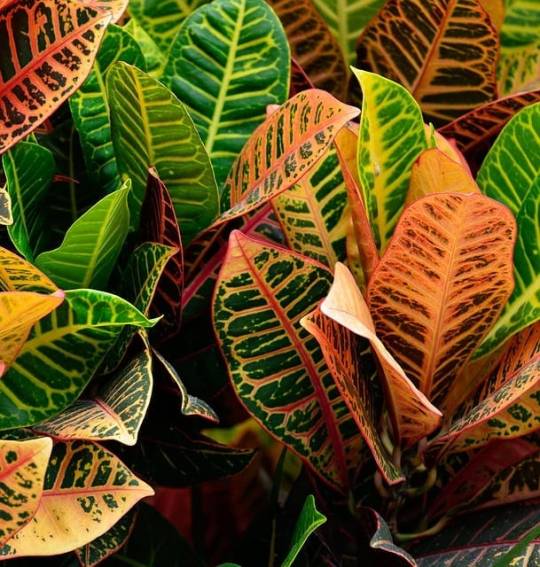

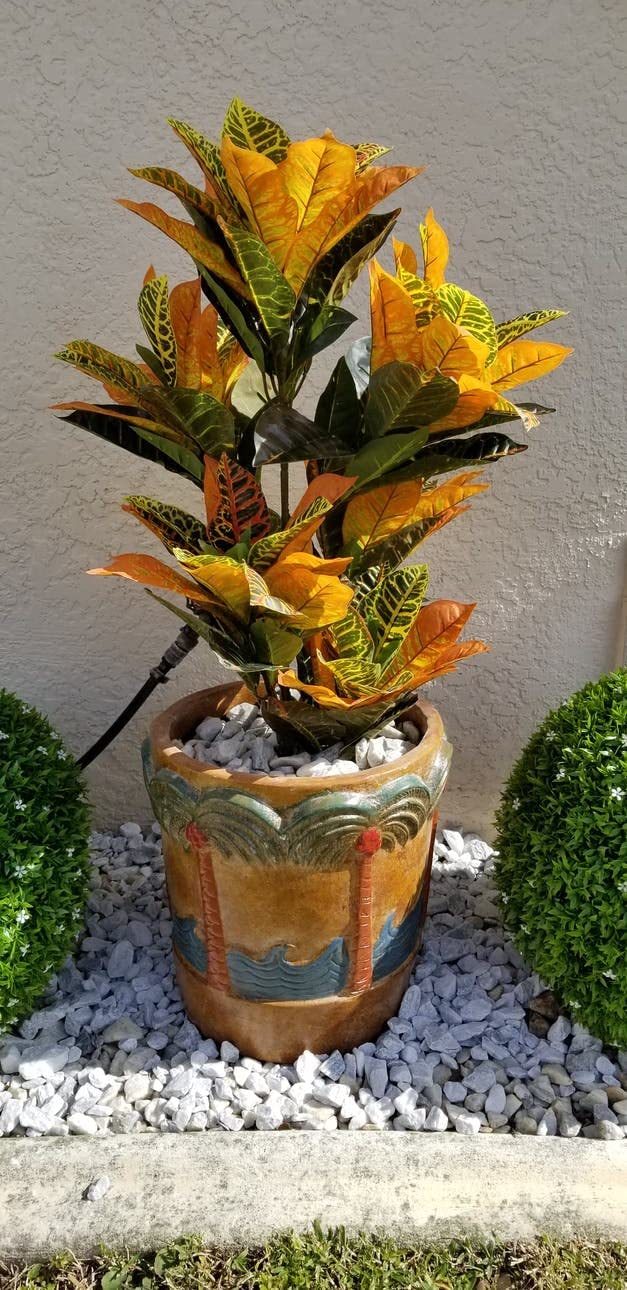
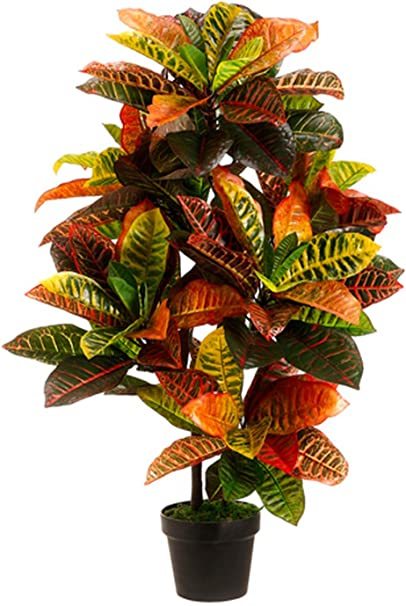
Nearly bright enough to make your eyes water, the croton’s flashy leaves are variegated in bright yellow, red, and orange set against dark green or black. Sometimes also known as the rushfoil plant, the croton thrives in bright, well-lit rooms with south, east, or west-facing windows. They can be grown in lower-light conditions, but the leaves may lose a lot of their bright coloring.
Native to the rainforest of Southeast Asia, the croton prefers well-drained soil and must be kept at the proper humidity in order to thrive. To ensure that your croton receives sufficient moisture, mist regularly or create a humidifying tray filled with pebbles and water and place your plant on top of the pebbles and out of direct contact with the water.
Every part of this plant is toxic, so keep it away from small children or pets, as it can be harmful when ingested.
Sunlight Croton plant requires six to eight hours of direct sunlight every day to maintain and produce its gorgeous foliage.
Water Watering a Croton plant depends on the situation. It can be daily or weekly because you should never let the soil stay dry for an extended period. However, check if the soil is dry before watering to avoid overwatering and root rot. Keep your Croton plant evenly moist in the summer.
Humidity The ideal humidity range for your Croton plant is between 40% to 80%.
Temperature Your Croton plant loves warm weather, and it prefers room temperature, between 60°F to 70°F.
Toxicity Croton plants are poisonous to humans and pets.
Food Feed your Croton plant with a low-nitrogen, slow-release, granular fertilizer once during spring and summer.
Pests and Problems Croton plants are prone to common pests, such as mealybugs, scale, spider mites, and thrips. To eliminate these pests, clean your Croton plant with a cotton ball soaked in rubbing alcohol.
Omysa Plant Care Tip Avoid moving your Croton plant as much as possible to prevent shock and falling leaves.
Croton Plant Care Tips
Aside from the falling leaves problem, Croton leaves are dust magnets, as well. Just remember to gently wipe the leaves with a moist cloth twice a month to keep the leaves clean and dust-free. Here’s a complete explanation of how to care for your Croton plant, from sunlight requirement to common problems and its solutions.
Sunlight
First, on our list on how to care for your Croton plant is to put it in a sunny location where it can get direct sunlight or full sun of at least six to eight hours each day to attain full, vibrant color. However, different Croton species can tolerate partial shade.
Common Problem: If the leaves of your Croton plant are losing its color, this could mean that it’s not receiving the right amount of sunlight. However, if the leaves are turning brown, this could mean that it’s getting too much sun.
Solution: Your Croton plant prefers direct sunlight or full sun, but exposing your Croton plant for too long can cause scorched brown spots or sunburn. Color loss of Croton is common in low light conditions. Since it’s a tropical plant, they do best under bright indoor light or full sun.
Water
Next on our list on how to care for your Croton plant is to water it when the soil is dry. This depends on the situation and the amount of light your Croton plant is receiving. It can be daily or weekly. Keep in mind that you should never let the soil stay dry for an extended period. Keep your Croton plant evenly moist in the summer, but do not overwater it as it can cause root rot, which is fatal to plants.
Common Problem: If the leaves of your Croton plant starts to wilt, this could mean that your plant needs more water.
Solution: One way to check if your Croton plant needs water is to check its foliage. The leaves of this plant will begin to wilt when thirsty. Be sure not to overwater your Croton plant because root rot is difficult to fix, and it can kill your plant.
Humidity & Temperature
Adding to our list on how to care for your Croton is to put it in a room with high humidity or 40% to 80% humidity levels, such as your bathroom. Croton is a humidity-loving plant, so it’s best if you can mist it often, place it near a humidifier, or use a pebble tray.
Your Croton plant prefers room temperature, between 60°F to 70°F. Never allow the temperature to go below 60°F as it can cause the plant to lose its leaves, and it may even die.
Toxicity
All parts of the Croton plant are poisonous, especially the seeds.
Food
Another on our list on how to care for your Croton plant is to feed it with a low-nitrogen, slow-release, granular fertilizer once in spring and summer. Do not feed in the fall or winter.
Remember to follow the recommended amount of fertilizer and schedule to avoid fertilizer burn or plant burn.
Pests & Other Problems
Croton plant is prone to common pests, such as mealybugs, scale, spider mites, and thrips. To prevent these pests, clean your Croton plant regularly with neem oil and water. You can eliminate mealybugs with a cotton ball dipped in rubbing alcohol.
That’s a wrap on how to care for your Croton plant. Another tip to avoid leaf loss, repot them only when necessary or when its roots are growing out of the bottom of the pot. Always remember that different types of Croton plants require different plant care. Check the tag and do your research.
Grow your plant knowledge. Check out our Plant Care blog to learn more about different houseplants and tips on how to keep your plants alive and healthy.
0 notes
Photo

Rushfoil #drawing #illustration #illustrationart #art #instaart #artoftheday #linedrawing #lineart #design #designfeed (at Seattle, Washington) https://www.instagram.com/p/Bp-LVR6BOvT/?utm_source=ig_tumblr_share&igshid=1tdumzckh6j2l
#drawing#illustration#illustrationart#art#instaart#artoftheday#linedrawing#lineart#design#designfeed
1 note
·
View note
Text
2019 Trend: Houseplants Are Back and Bigger than Ever
I remember looking through my Mammaw’s old Better Homes Gardens magazines from the 70s and 80s and seeing homes like this: Photo from GoRetro.com Photo from GoRetro.com And even business lobbies like this: Photo from Mirror80.com It felt less like people had built homes for themselves, and more like they’d carved out spaces to live in the jungle. In my early teens, I couldn’t imagine a house that chock-full of plants. Fast forward 20 years, and all I can think about is houseplants. I own a home, and every blank wall or unused corner is just screaming for a living plant. My friends are a relatively small sample size, but I’m going to go out on a limb and say that since they’re just as plant-crazy as I am, this is the next trend in home decor: houseplants. And I don’t mean just any old houseplants. In 2019, if youre buying houseplants the bigger, the better! But here’s the thing: don’t just go with a ficus like your grandma did in the 70s. There are so many amazing varietals and strains of houseplants now (and even some outdoor plants that do great indoors). Let’s look at your options! We’ll go from smallest to largest (and in the interest of size, I skipped straight to the biggest ones I could find). 1-5 Foot Tall Houseplants Schefflera Photo from MiracleGro.com Also known as the Umbrella Tree, this indoor plant has independent, glossy leaves; a sturdy trunk; and very low needs as far as watering and pruning go. It’s really ok with being ignored and only watered when you feel like it. Most Schefflera come as seedlings or starters they’re slow-growing, so it takes a couple years for them to start showing height. Croton Photo from GardnersPath.com Also known as rushfoil, Joseph’s coat, or variegated laurel, croton is super sun-friendly and easy to grow. In fact, the more bright sunlight a croton gets, the more colors its foliage will turn. They can sometimes scare new plant owners because they shed leaves when you bring them home, but with a little steady care, they’ll thrive. Crotons can reach about 3 feet and be propagated to form wide displays or be trained into a tall, spiral-shaped tree. Aglaonema via Cdeco.fr This hearty option comes in a wild variety of colors, shades, and patterns. There’s even a tricolor that looks like camo. Aglaonema is so easy it even will grow in darkened bedrooms and interior rooms. It can grow up to about 4 feet and gets very wide, so be sure to leave space around it to spread those beautiful leaves. Aspidistra via AARP.org Part of the lily family, the aspidistra or cast iron plant is mostly green, lush leaves. They have spindly bases that don’t seem able to support the foliage above them but somehow manage it. And they’re super low-maintenance. Most aspidistras grow slowly, up to about 4 feet high. Zamioculcas Zamiifolia via Gardenista.com I know you’re not supposed to play favorites, but this one is MY FAVORITE. Sometimes called the ZZ plant or the Zanzibar Gem, these [...] The post 2019 Trend: Houseplants Are Back and Bigger than Ever appeared first on Homes.com.
0 notes
Text
2019 Trend: Houseplants Are Back and Bigger than Ever
I remember looking through my Mammaw’s old Better Homes Gardens magazines from the 70s and 80s and seeing homes like this: Photo from GoRetro.com Photo from GoRetro.com And even business lobbies like this: Photo from Mirror80.com It felt less like people had built homes for themselves, and more like they’d carved out spaces to live in the jungle. In my early teens, I couldn’t imagine a house that chock-full of plants. Fast forward 20 years, and all I can think about is houseplants. I own a home, and every blank wall or unused corner is just screaming for a living plant. My friends are a relatively small sample size, but I’m going to go out on a limb and say that since they’re just as plant-crazy as I am, this is the next trend in home decor: houseplants. And I don’t mean just any old houseplants. In 2019, if youre buying houseplants the bigger, the better! But here’s the thing: don’t just go with a ficus like your grandma did in the 70s. There are so many amazing varietals and strains of houseplants now (and even some outdoor plants that do great indoors). Let’s look at your options! We’ll go from smallest to largest (and in the interest of size, I skipped straight to the biggest ones I could find). 1-5 Foot Tall Houseplants Schefflera Photo from MiracleGro.com Also known as the Umbrella Tree, this indoor plant has independent, glossy leaves; a sturdy trunk; and very low needs as far as watering and pruning go. It’s really ok with being ignored and only watered when you feel like it. Most Schefflera come as seedlings or starters they’re slow-growing, so it takes a couple years for them to start showing height. Croton Photo from GardnersPath.com Also known as rushfoil, Joseph’s coat, or variegated laurel, croton is super sun-friendly and easy to grow. In fact, the more bright sunlight a croton gets, the more colors its foliage will turn. They can sometimes scare new plant owners because they shed leaves when you bring them home, but with a little steady care, they’ll thrive. Crotons can reach about 3 feet and be propagated to form wide displays or be trained into a tall, spiral-shaped tree. The post 2019 Trend: Houseplants Are Back and Bigger than Ever appeared first on Homes.com.
0 notes